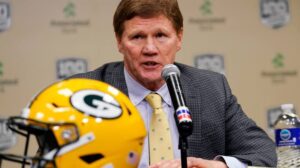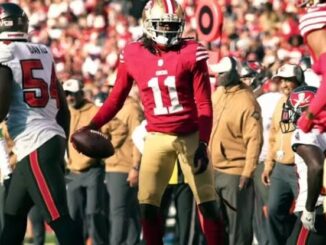

Mark Murphy Steps Down as CEO of Green Bay Packers: A Shift in Management Power Structure
In a surprising turn of events, Mark Murphy has announced his decision to step down as CEO of the Green Bay Packers, a move that has sent ripples through the organization and the NFL community. Murphy’s tenure has been marked by significant changes within the Packers’ management structure, reshaping how the franchise operates both on and off the field.
A Transformative Leadership
Murphy, who took the reins as CEO in 2007, was known for his strategic vision and commitment to maintaining the Packers’ legacy. Under his leadership, the organization navigated complex challenges, including the construction of the Titletown District—a community space aimed at revitalizing the area around Lambeau Field—and the transition to a new era of player management.
However, Murphy’s approach to leadership was not without controversy. His decision to alter the management power dynamics within the organization has drawn both praise and criticism. By elevating certain executives and reallocating responsibilities, he aimed to foster a more collaborative environment. Yet, this restructuring led to tension among staff and some resistance from long-time members of the organization.
The Management Power Shift
The most significant aspect of Murphy’s tenure has been his handling of the management power structure. By sidelining traditional roles and emphasizing a more modern, data-driven approach, he sought to align the Packers with contemporary NFL trends. This shift, however, raised questions about loyalty, legacy, and the future direction of the team.
The changes came to a head during the offseason, when tensions reportedly flared between Murphy and head coach Matt LaFleur, as well as general manager Brian Gutekunst. This friction highlighted the delicate balance between the old guard and the new vision for the team.
The Aftermath of Murphy’s Decision
Murphy’s departure signals a potential return to a more traditional hierarchy within the Packers’ front office. As the franchise looks to move forward, the challenge will be to integrate Murphy’s modern approaches while respecting the club’s storied history.
The Packers now face a pivotal moment as they search for a successor who can unify the organization and instill a sense of stability during a crucial period. This new leader will need to navigate the complexities of the modern NFL, balancing innovation with the rich traditions of the franchise.
Looking Ahead
As the Packers embark on this new chapter, fans and analysts alike will be watching closely. The outcome of this leadership change could have lasting implications for the team’s competitive future and overall identity.
In stepping down, Mark Murphy leaves behind a legacy of transformation that, while controversial, has undoubtedly altered the fabric of the Green Bay Packers. The franchise now stands at a crossroads, tasked with building upon the groundwork laid during his tenure while redefining its path forward in the NFL landscape.



Be the first to comment